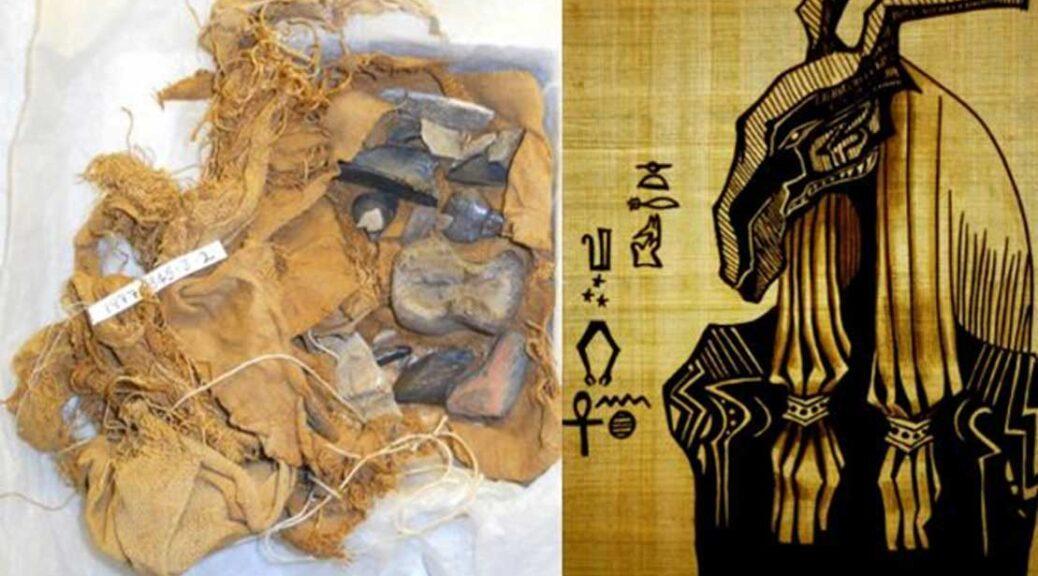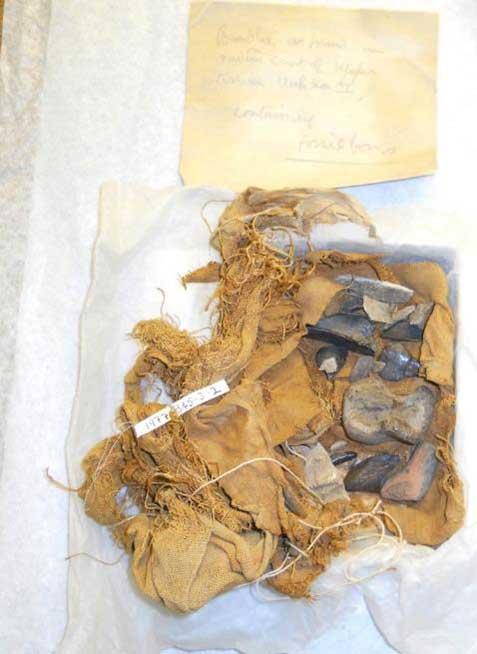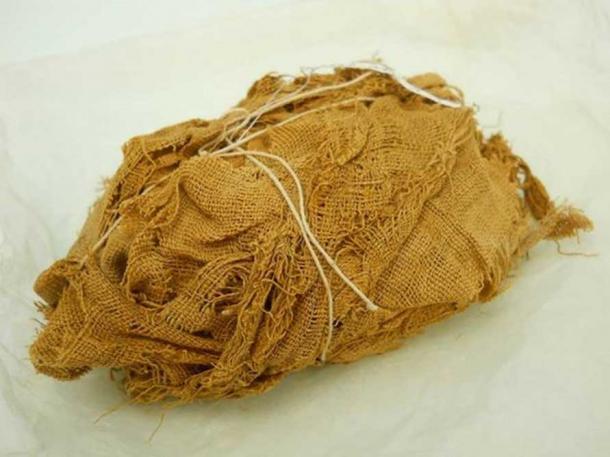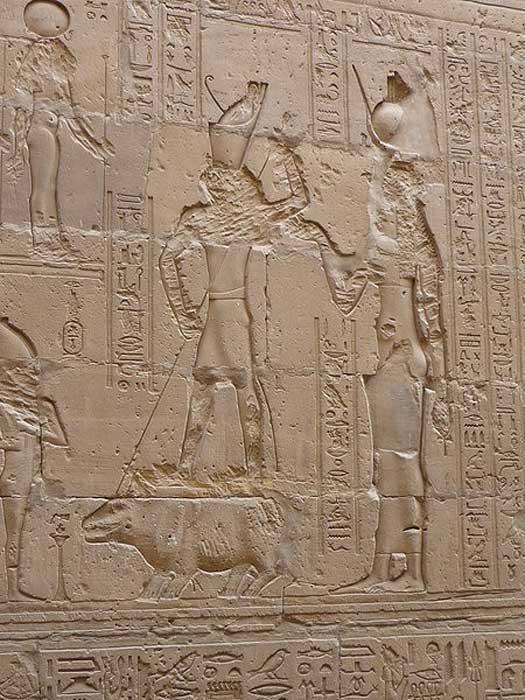A linen bundle unwrapped many years ago, from Qau el-Kebir was found to contain fossil bones.

Some of the first people ever to stumble upon prehistoric fossils lived in Egypt 3,300 years ago. Their story likely started with a sandstorm. Some strong wind rose up and blew the desert sands away, exposing a secret hidden underneath: the hard, pitch-black bones of what looked like a gigantic monster.
We can only imagine what must have gone through the minds of the men who found them. They didn’t write a word about it – or, if they did, it’s been long lost to the decay of time.
All we know is what they left behind: a tomb filled with prehistoric fossils, some of them as much as two million years old, hidden until 1922 AD. It’s a fascinating mystery that we’re only starting to unravel today. We don’t know for sure what sense they made of the bones of the massive prehistoric giants that they found. Slowly but surely, though, archaeologists are unravelling a few clues.

It’s taken nearly a century of research to discover anything about the prehistoric fossils found in ancient Egypt. When the first archaeologists, Guy Brunton and Flinders Petrie, found them, they didn’t even fully understand what they’d discovered. All they knew, at first, was that they’d found bundles wrapped in linen, with no idea what could be inside.
The Egyptians, after all, hadn’t put these bones on display. Instead, they’d taken them to a rock-cut tomb near a town called Qau el-Kebir. There, they’d given the massive, prehistoric bones the sort of dignified burial fit for royalty. They’d wrapped them up in fine linens and placed them in the tomb, buried with ivory tools to help them through the afterlife.
Linen bundle still wrapped (supported by modern string) found in a rock-cut tomb at Qau el-Kebir, c.1922-24.

Whatever it was they thought they’d found, they believed it was something worthy of their respect. The tombs of Qau el-Kebir weren’t just makeshift graves thrown together for the occasion; they were the ancient resting places of powerful Egyptian lords, built 1,500 years before the fossils were found.
It was a place for the revered ancient dead; a place fit for the bones of a creature that, 2 million years ago, had terrorized the land that would become Egypt.
Three Tons Of Fossils Transported Over Miles
We still have no idea where the Egyptians found them. In 1926, shortly after they were uncovered, a geologist named K. S. Sandford combed every spot within 500 miles ( km) of Qau trying to track them down without success. To this day, nobody’s been able to figure it out for sure.
All we know is that they were moved. There were more than three tons of them and they had been dragged across miles of wild country, just to bury them again. It must have felt like nothing short of a holy act. It would have taken an incredible amount of effort to move those bones, and a whole team of people must have been involved.
Their destination, Qau el-Kebir, was no ordinary town. It was the centre of a cult dedicated to the god Set, the god of darkness, storms, and confusion. He was the lord of the black land; a monstrous, evil force who was often drawn looking like a monster with a hippopotamus’s head.
Wall relief of fight between Seth and Horus where Horus, helped by Isis, kill Seth (hippopotamus), the temple of Edfu, Egypt.

Without question, the bones were taken there on purpose. Whatever the Egyptians believed they’d found, they thought they belonged to the god of Chaos, and they were willing to do anything to bring them to him.





